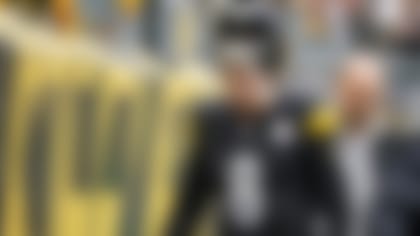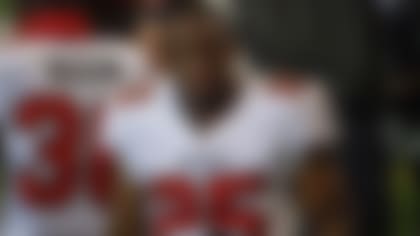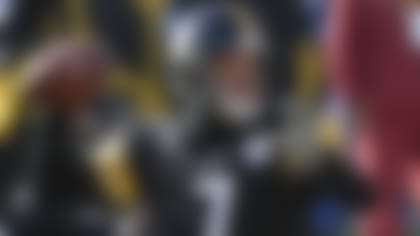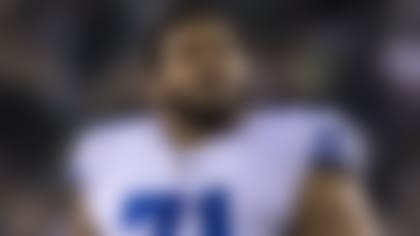The Seahawks made the Super Bowl by not following the crowd. In an era of high-flying passing attacks, they built up a dominant, multi-faceted defense buttressed by a strong running game.
Coach Pete Carroll and general manager John Schenider see prospects differently than the rest of the league. They draft players in surprising spots, often raising the ire of the draftnik industrial complex. They take players that are "too light" or "in between positions."
Russell Wilson is the embodiment of this unique vision, but he was taken in the third round, where many teams reportedly valued him. The selections of Bruce Irvin, Bobby Wagner, Richard Sherman, Kam Chancellor and Earl Thomas spoke louder about how the Seahawks do business. They saw traits in the players above that other teams didn't, and knew how to use them.
Among the four teams playing on championship weekend, the Seahawks had the fewest unrestricted free agents on the roster. Seattle was also the youngest team, according to USA Today. While the Broncos rely on many over-30 players and free-agent rentals, the Seahawks are homegrown with a few key exceptions.
The Seahawks look for standout skill sets in players, and then put them in positions to succeed. Carroll and his staff are among the best at developing talent. They meld a player's strengths into their system, rather than try to mold their players to best fit their scheme.
Here's a look at how the Seahawks they built their roster over the years:
Some takeaways from our chart:
» Only four Seahawks remain from the pre-Carroll era, although they are vital. Max Unger is a Pro Bowl center. Brandon Mebane and Red Bryant form the backbone of Seattle's stout rush defense. Carroll and Schneider made a dizzying amount of moves when they took over in 2010, but it's telling that they decided to award long-term contracts to Mebane and Bryant.
» How do you quickly rebuild a depleted roster? Check out the 2010 column.
The Seahawks drafted an All-Pro (Thomas), two Pro Bowl players (Chancellor and Okung) and two other valuable contributors (Thurmond and Tate.) They traded for Marshawn Lynch at a deep discount; he's evolved into the second-best running back in the NFL. They also traded for Chris Clemons, a journeyman pass rusher that has been sensational in Seattle.
This was Seattle's vision. They loaded up their team -- especially their defense -- with physical players. The Seahawks started building defensive depth everywhere, especially on the line and in the secondary. That 2010 crop set the stage for the team's dramatic climb to the league's upper crust.
» Not every Seahawks pick has been golden. In 2011, they tried to rebuild the offensive line with James Carpenter (first round) and John Moffit (third round). Those picks haven't panned out, and the Seahawks have yet to get much production from the 2013 draft class.
» The back end of the 2011 draft, however, was incredible. K.J. Wright is one of the most versatile and underrated linebackers in football. Richard Sherman is a Defensive MVP candidate selected in the fifth round. Byron Maxwell and Malcolm Smith have played huge snaps for Seattle down the stretch this year.
Maxwell is a perfect example of how the Seahawks do business. He quietly stayed on the sideline for nearly two and a half seasons. When he was called upon this season to replace Brandon Browner and Walter Thurmond, Maxwell was somehow an upgrade over both of them. Maxwell might be more physical than even Sherman at the line of scrimmage. He was ready for his moment, and that comes back to coaching.
» The Seahawks adjusted their approach last offseason. After three years of steadily building their roster, they went for broke. They put some finishing veteran touches on a team that was ready for the Super Bowl.
Michael Bennett's one-year contract was the single best bargain basement deal by any team in free agency last year. Other teams were scared away by his shoulder injury, but the Seahawks was happy to take on the short-term risk. (Bennett figures to strike it rich as a free agent this year.)
Cliff Avril was another reasonably priced free agent, while Tarvaris Jackson upgraded the team's backup quarterback spot. The trade for Percy Harvin has been a bust thus far, but it reflected a team that was in position to take a chance with multiple draft picks. As poor as that trade looks, Carroll and Schneider must be happy he's available for their inconsistent offense Super Bowl Sunday.
» We made it this far without talking about Russell Wilson. Finding your franchise quarterback in the third round changes everything, and the Seahawks will admit they would have taken Wilson earlier if they knew he would be this good.
They key is that Carroll, who promotes competition above all, recognized his third-round pick was a far better option than his $6-million free agent signing: Matt Flynn. Wilson's low salary allowed the Seahawks to take more chances in free agency, but that advantage has been overstated by some. You still have to spend (and draft) smartly. No one has done it better than Seattle.
*We handed out awards for the 2014 coaching class in the latest "Around The League Podcast." *












